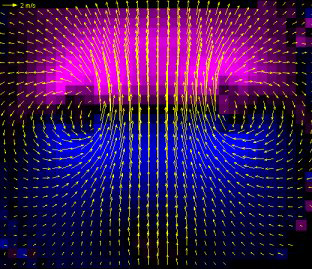Advanced PIV Methods
A cell shift during the calculation
means that a first pass extracts a likely displacement vector for one
interrogation window. In a second pass this rough estimation is used to look in
the second frame not at the exact same cell position but at a position already
shifted into the estimated direction. The advantage is that more identical
particles can be found in both frames' interrogation window.
The second technique which can also be combined
with others is that a first pass starts with a larger interrogation window and
following passes use this result and continue with smaller cell sizes.
The third and most advanced technique uses a window deformation which leads
to interrogation cells which are not square but their edges follow the local
flow and therefore capture even more identical particles while still being able
to correctly capture strong local variations.

Image Correction
When optical windows between the camera and the experiment disturb the imaging conditions they can be corrected for.
Stereo (3D) PIV
An additional camera is used to obtain 3 dimensional informations.
Endoscopic PIV
In engines and turbines standard optical access is so small that an endoscope must be used to get images. The extreme image deformation (curvature) which is typical for endoscopes must be corrected.
